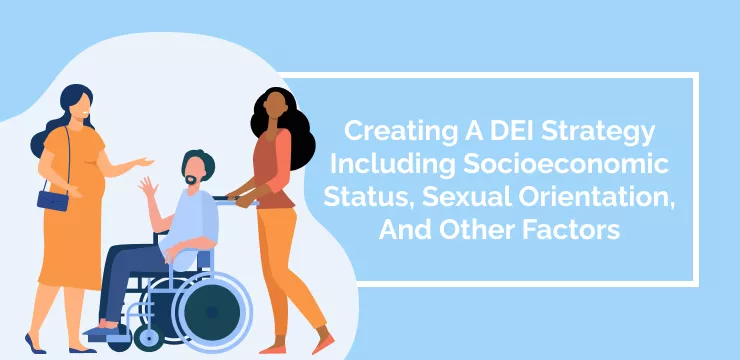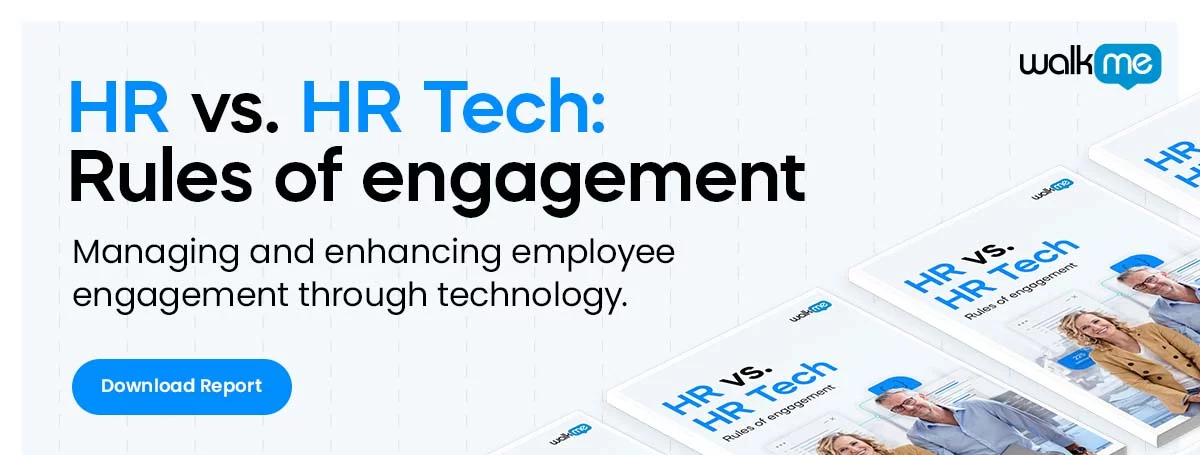
Tech leaders today face a challenging task. They must keep track of constantly changing technologies and the social and political perspectives on how they use these technologies to support employees and protect the image of their organization. Diversity equity and inclusion technology is an excellent example of digital tools’ social and political importance and how tech leaders can use them to benefit their staff and company.
But what do diversity, equity, and inclusion mean? How does DEI benefit the tech industry? And how can DEI technology enable organization-wide change? We will explore all of these questions, beginning with a definition of DEI.
What Is Diversity, Equity & Inclusion?
It is challenging to define equity and inclusion as individual tech leaders define these terms differently. Some staff groups these three concepts as they feel they are only part of the professional culture for political reasons for which they may have had no say.
Diversity covers variety and differences between people, making it the broadest of the three terms. People commonly think of differences between people that are easy to see or talk about, such as gender identity and sexual orientation. But diversity is also about invisible differences, such as differences in opinion. Think of diversity as everyone wearing a different type of shoe.
However, once employees understand and appreciate the difference between these three concepts, they begin to see the benefits to themselves and overall change management within their organizations.
We can group equity and inclusion when they are fully understood. Equity does not mean treating people in precisely the same way despite their differences. Equity is treating people differently because of differences based on their needs to ensure fair and just treatment, free from unconscious bias or conscious favoritism that leads to different treatment for the wrong reasons. Think of equity as everyone having a pair of shoes that fit them perfectly.
However, staff must practice equity with positive intentions and a deep understanding of these differences for acts to be equitable.
Understanding inclusion is more accessible as it involves everyone having the power to influence decisions and outcomes despite differences. Think of inclusion as everyone having a say in what type of footwear they want. So what is the importance of implementing all these concepts in the tech industry?
Diversity, Equity & Inclusion In The Tech Industry
Tech leaders use technologies to collect information on their staff to ensure the organization follows DEI policies. This data allows companies to improve diversity equity and inclusion by increasing the quality, quantity, and ability to action demographic data.
Tech companies use DEI tech to:
- Reduce and control levels of bias
- Setup a team inclusion program
- Measure DEI progress
- Build on diverse top talent acquisition pipelines
- Design products aimed at excluded communities
- Collect and analyze diversity data
- Ensure job descriptions are inclusive
These technologies ensure that organizations meet the needs of people in many communities. Such technologies make it easier to promote equity for First generation immigrants, those with veteran status, English language learners, members of the LGBTQIA+ community, disabled people, and many other underrepresented communities. But aside from collecting and analyzing data, how does technology support DEI today?
How Does Technology Support Diversity, Equity & Inclusion?

DEI leadership can utilize the limited DEI technologies despite DEI tech being an emerging technology with limited frameworks for optimizing DEI tech. The first of these categories for DEI tech use is innovative technologies.
Innovative Technologies
Deloitte reports that just 13% of companies are leveraging technologies and advanced analytics to deliver DEI goals, with 41% exploring DEI tech. The statistics on companies attempting to establish and expand on the diversity of their talent pool is higher, at 66%. But the actions to achieve this are rarely implemented.
Ideas tech leaders can act to implement innovative DEI technologies are:
- The definition and adjustment to leadership behaviors, reducing bias in reaction to employee feedback, promotion decisions, and talent acquisition.
- Closed caption subtitle features for video meetings.
- Pronoun options for Zoom meetings.
- Name pronunciation audio features for video meetings and e-signature software.
For DEI, tech leaders must be aware of these examples of tech innovation to ensure their organization strives toward the most open and inclusive social and political perspective. Leaders can also use DEI technologies to drive decisions using DEI data.
Utilizing Actionable Insights From Data & Analytics
Many data obstacles occur when working toward DEI goals and metrics. The most significant barrier to tech leaders and CIOs (chief information officers) achieving DEI using the available data stored across several different platforms. Over half of companies report this issue, which makes finding and collating the relevant DEI data inefficient, time-consuming, and frustrating.
In addition, 44% of companies report that tracking the employee life cycle data is inconsistent, making it challenging to see if the DEI experience of employees improves over time.
These statistics highlight a need for actions to deal with the lack of data cohesion and availability:
- Pay equity analysis compares demographics and roles within a complex matrix of other factors.
- Succession planning tools include DEI factors.
- Community self-identification and employee self-identification tools allow staff to identify their attributes.
- A coaching program using intersectionality as a qualifying criterion.
- Companies can deploy a DEI platform to collate data and convert metrics to analytics.
Tech leaders must consider the different perspectives they can create using the available data and how accessible it is to team members. Without such efforts, information is collected and becomes a waste of resources as its leaders do not utilize it to benefit the organization.
Marketplace Status
Tech leadership must identify where an organization leverages technology to ensure that resources are optimized to support DEI goals. 69% of companies focus their tech on talent acquisition, with the other categories in the top three being staff advancement and employee retention. However, only 36% leverage tech for data reporting and accountability, showing a gap in how leaders leverage tech to ensure DEI actions link with policy.
The best ways to meet these needs and build on existing successes are for tech leaders to:-
- Evaluate partner and vendor commitments to DEI using customer demographics, certifications, tech leadership, and branding.
- Custom cloud platforms designed to promote DEI across the entire employee life cycle.
- Platforms that are available to and used by all departments to ensure information is shared on a single platform to encourage collaboration.
The marketplace status is an area that tech leaders must focus on to ensure that cross-departmental collaboration occurs at the structural level. Doing so allows a top-down view of DEI successes and where areas of improvement are needed. But how can leaders use these technologies to bridge the diversity gap in business?
How Technology Bridges The Diversity Gap

Technology can bridge the gap between DEI goals and reality in many ways. Tech leaders can use DEI technology to promote DEI by ensuring that all DEI decisions are data-driven, not subjective opinions subject to bias.
Ensures Decisions Are Data-DrivenOne of the critical advantages of DEI tech is that organizations can make team changes founded on data rather than subjective opinions.
1. Allows Precise Employee Profiling
Leaders can use HRIS to collect data into one unified, accessible area regarding employee career goals and CPD (Continuous Professional Development), culture, and ethnicity. HR, tech, and team leaders can then easily ensure they are accountable for offering tailored, equitable support to staff based on their individual needs throughout their employee lifecycle.
2. Narrows The Gender Pay Gap
Tech leaders can use DEI technologies to reduce the gender pay parity processes between men and women within their organizations. HR can achieve this goal by performing a pay audit to establish pay gaps, including all roles, locations, and demographics.
Once the data on pay rates for men and women are collected, HR can hand it to IT teams to visualize for tech leaders and the CEO to examine and decide what steps to take next. Companies usually organize training for compensation performance managers to identify pay gaps to ensure that compensation managers work within DEI and fairness policies.
3. Enables Tracking Of DEI Goals
Tracking the goals of all individuals within enterprise organizations is a huge challenge when there is a lack of methods for collecting and analyzing data. DEI technologies collect and analyze demographic data to ensure that the company follows DEI policy.
When a company has collected data and added it to a system, it can conduct reports to ensure that progress is moving toward company DEI goals. When publishing the information, adjustments can occur to ensure the company hits DEI goals.
4. Tackles Unconscious Bias In The Recruitment Process
Unconscious bias is a hugely damaging factor within the recruitment process. Bias, whether conscious or unconscious, affects all levels of recruitment, from sourcing candidates to writing job descriptions to screening and decision-making.
‘Ambitious’ and ‘dominate’ are masculine-sounding words that often make female candidates hesitate to apply for roles. Tech leaders can use artificial intelligence (AI) to reduce gender bias using an HRIS (Human Resources Information System) or DEI platform. These systems include features to emphasize any exclusive language in job descriptions so HR staff can remove them.
Tech leaders should also utilize the AI features of HRIS software and DEI platforms to screen hundreds of submitted CVs while removing demographic information. This action allows them to choose candidates based solely on qualifications and experience.
Creating A DEI Strategy Including Socioeconomic Status, Sexual Orientation, And Other Factors

A DEI strategy is morally, politically, and socially essential for any organization. Strategy planners must include training as a significant aspect of any DEI strategy as, according to Gartner, 82% of companies see training as the most critical component of their DEI practice. But there are several other steps to follow to ensure that a DEI strategy is successful, starting with what DEI policies and values you are already implementing.
1. Begin With Existing Resources
When looking closely at existing DEI policies, tools, accommodations, processes, benefits, and compensations, ask yourself, who is the company leaving out? What changes do we need t implement so that the organization includes everyone in the DEI policies?
2. See Beyond Recruitment
As an organization begins its DEI journey, a more diverse workplace will be the first aim. But it is essential to think beyond getting a more diverse group of employees; you must also put infrastructure in place to keep them satisfied, supported, and welcomed. This culture requires strategic planning for the organization to embed DEI into every aspect of the company.
3. Make The Strategy Detailed And Practical
Categorize your plan into small, segmented strategic policies. Each of these strategic policies needs its subset of specific goals with easy-to-follow objectives and subsequent actions. The success is detailed, so a detailed plan is far more likely to provide ROI than a vague one.
4. Ensure The Strategy Is Measurable
An immeasurable plan is worthless, so always design metrics and analytics to measure and create insights from the progress of your strategy. DEI metrics include recruitment and employee demographics, promotion rates, retention, employee onboarding, and offboarding interviews.
5. Prioritize Communication
Communication is key to ensuring everyone feels meaningfully invested in the strategy, knowing their role and what the outcome means to them and their department. Formal and information communication through many different channels is essential for the success of your strategy.
6. Include Culture
A strategy caters to one aspect of implementing DEI but must exist within a positive culture to maintain its momentum. Company cultures are like gardens, with all the changes and diversity that a collection of plants have. Without being cared for correctly, the DEI portion of the garden will die, so it needs constant attention and review of approaches to ensure success. Change management tools can help to guide culture toward DEI values.
7. Reach Out For Employee Feedback
Employees need to feel a DEI strategy is for them, not just a box-ticking exercise. Reinforce this by reaching out to employees for their views at every strategy stage. Formal feedback through pulse surveys is helpful, but a culture of trust is also necessary to get informal feedback which can be more personal and valuable to how employees feel about a new strategy.
Any strategy, particularly a DEI strategy, with all its radical changes to culture and values, can be a massive challenge to staff. Tech leaders reduce this challenge when they know it is not over after implementation. DEI is an ongoing process that needs regular review and adjustment using metrics and employee feedback.
When employees see their feedback not just listened to but actioned, their attitudes toward DEI will become positive. Employees will become champions of DEI, creating a company open to change and resilient against market disruption.
Four Areas Where Diversity and Inclusion (D&I) Technology Can Enable Organization-Wide Change

It’s essential to recognize that D&I is not simply a task completed for company image or public relations. D&I is a means to achieve organization-wide change for the benefit of individual employees and the organization.
Learning & Development
Traditional D&I training includes sexual harassment and unconscious bias training. But companies are beginning to utilize new technologies to help employees better understand D&I values. Technology vendors Being VR and Equal Reality offer companies VR unconscious bias and awareness DEI training to support employees see their colleagues’ experiences and improve their workplace behaviors.
Talent Acquisition
Talent acquisition is one of the largest areas for D&I technology. Many technologies exist to reduce unconscious bias in recruitment, attract a more diverse workforce and create a more inclusive process for selecting candidates. Video-based AI can analyze interviewer biases and allow reflection on how to interview inclusively.
Analytics
D&I analytics are the key to creating workplace insights for prioritizing D&I improvement and decision-making areas. Metrics should measure areas like diverse talent pool turnover rates and the key sources of talent.
Tech leaders can use these analytics to review the success of D&I strategies on business outcomes and adjust strategy as necessary to decide which investment they should focus on for the recruitment of a particular demographic group and what ROI this action will give the company.
Examples of analytics for niche solutions include Pipeline, Sameworks, and Visier, but HRM and DEI platforms also have analytics features built-in.
Employee Engagement
Technology to capture feedback and engage with employees is an essential category of D&I technology. Some D&I technologies allow companies to use sentiment analysis to establish patterns in feedback. Other solutions enable real-time culture evaluation to flag employee behaviors that are not inclusive.
Examples of employee experience and engagement technologies such as Cultivate focus on how managers communicate with team members using communication data from workplace interactions on the calendar, chat, and email. These technologies support managers to reflect on and improve their levels of inclusivity, role modeling positive values to team members.
How Can DEI Benefit The Entire Organization?

DEI technologies can benefit a forward-thinking company that uses new technologies to improve business outcomes and employee engagement. However, tech leaders must ensure that they develop any DEI strategy that includes DEI tech from the planning stage with the right intentions.
Employees need to feel they will benefit, so a blend of improved business outcomes and employee wellbeing must be some of the incentives for creating a strategy that utilizes DEI tech.
When employees feel that DEI-focused new technologies benefit them, they will work efficiently to follow the strategy values, becoming DEI champions.
A company of DEI champions becomes an organization that provides innovation through diverse perspectives and speaks to the strengths of all its diverse, equitably treated, and included employees. DEI-promoting companies become resilient to disruption, securing themselves a sustainable future of success.
Tristan Ovington
Tristan Ovington is a professional senior writer and journalist, specializing in providing expert insights on various topics such as digital adoption, digital transformation, change management, and Cloud apps. He delivers his knowledge through accessible online content that is data-driven and presented in a friendly tone, making it easy for readers to understand and implement.



